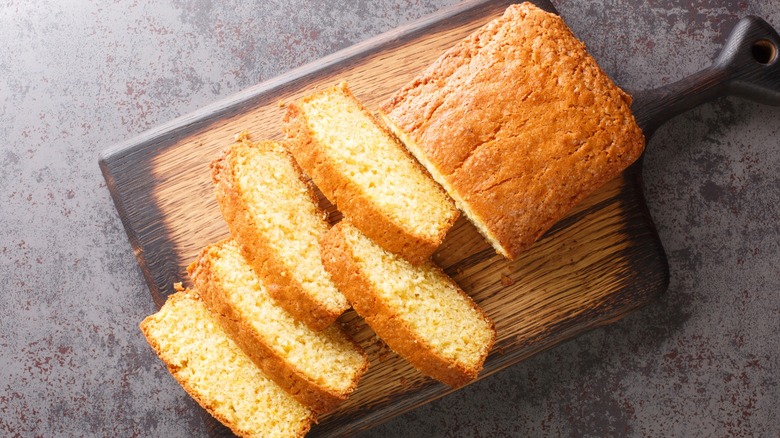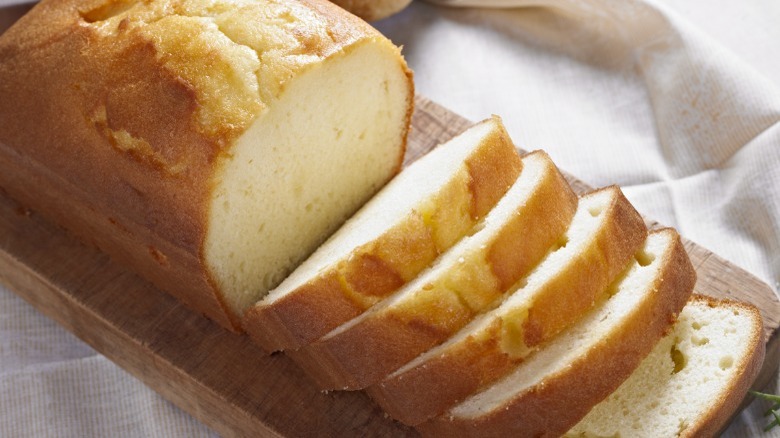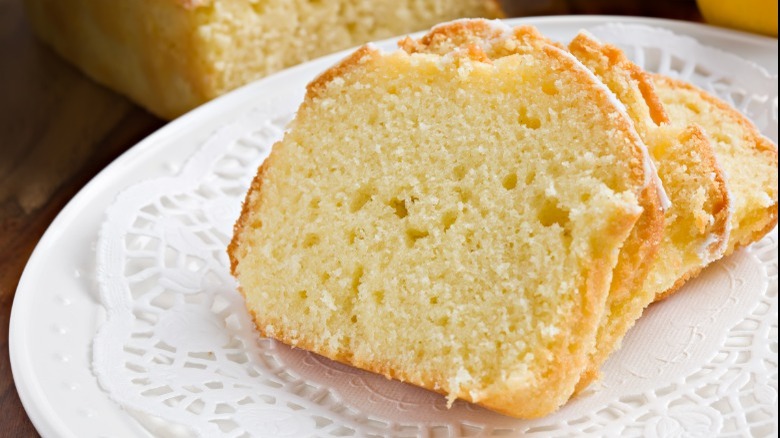Skip Preheating For The Best Pound Cake Around
Preheating your oven is important for most baked goods. For certain items like pastries, they really can only be baked when the oven is at the correct temperature because they need that initial blast of hot air to cook evenly. Similarly, if you bake your buttermilk biscuits before the oven reaches the proper temperature, the heat will slowly come up from below, burning the bottom of the biscuits before the top and middle even have a chance to bake.
But, it's not always the ideal method. In some instances, like when trying to get the best cakes and muffins, preheating the oven before baking isn't a requirement. In fact, when it comes to crumbly and delicious pound cakes, forgoing this step will yield a better result. Instead of waiting for the oven to come to temperature, bake your pound cake batter "low and slow" for a perfectly done finish — one where the outside will be just the right amount of crispy, while the inside will remain crumbly.
Really, a cold oven?
Yes, really. A cold oven could be the thing that takes some baked goods like pound cake to the next level. In fact, a number of baked goods can benefit from skipping this step. For cakes, you'll get a better crust without the risk of burning the batter. For muffins, their rise will be better controlled.
That's because pound cake and other cake-y recipes use some combination of baking powder or baking soda as leavening agents. When you bake the batter in a cold oven instead of a preheated one, the leavening agent is given more time to work its magic. Another benefit of starting pound cake in a cold oven is that it will be fluffier and rise more. Additionally, the low and slow method creates a crust around the inner crumb that is thicker and more caramelized. Not only is this thicker crust more delicious, it'll actually help your sweet loaf last longer by trapping the moisture of the inner crumb inside.
When making this treat in a cold oven, it's important to remember that the baking time may be different than what's listed on the recipe, however. One way to estimate the appropriate length is by adding the time it usually takes your oven to preheat to the listed recipe temperature, then subtracting a few minutes. But this isn't a foolproof method, and a good rule of thumb is to keep an eye on your bake when you use a cold oven.
Other good pound cake tips
While pound cake traditionally has been made with a pound each of eggs, sugar, butter, and flour, baking it isn't always as straightforward. But there are a number of proven tips besides starting with a cold oven that'll make sure you're baking the best pound cake possible.
In terms of the actual mixing and combining of ingredients, it's best to make sure everything is at room temperature before getting started. And your softened butter should be beaten with care and patience; you want it to be as creamy and light as possible to get as much air into the batter as you can — this is another way to ensure your pound cake has lots of rise.
When you do finally get to baking the treat, try not to open the oven to check on it until the minimum amount of time needed to bake has gone by. Opening and closing the oven causes heat to escape, which can impact the amount the pound cake is able to rise. After it's done baking, slice the cake, wrap the leftovers in plastic wrap, and place in an air-tight container. Although tedious, this will help prevent dryness from creeping in. When you're slicing, it's also best to use a serrated knife to avoid squashing the crumb. If your pound cake does happen to dry up, try brushing it with a simple syrup or fruit juice to add some additional moisture.



